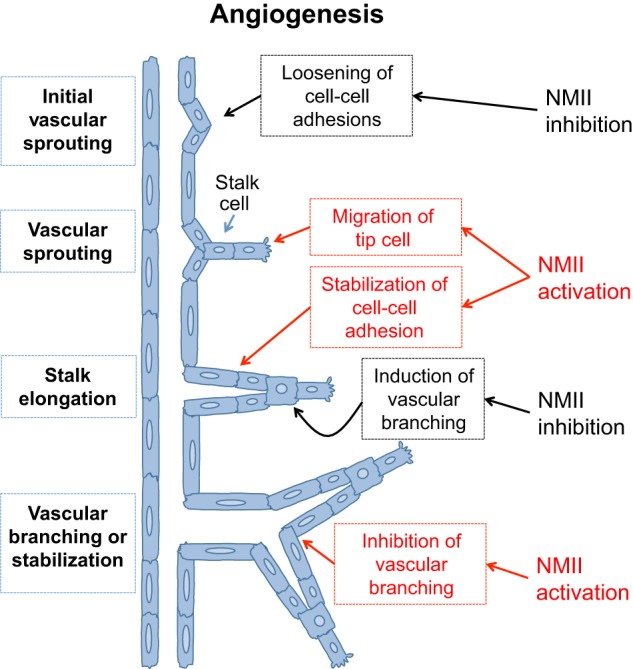Fig. 5.

Differential NMII activity defines distinct stages of angiogenesis. After the detection of stimuli (hypoxia or growth factors), NMII inhibition results in the loosening of endothelial adherens junctions, favoring the detachment of migrating endothelial cells (tip cell). The tip cell migrates into the connective tissue, in a mechanism that relies on NMII activation (see Fig. 3B). During collective cell migration (stalk elongation), NMII activation stabilizes the junctions of the follower endothelial cells, resulting in stalk elongation. During stalk elongation, the localized activation or inhibition of NMII results in the inhibition or induction of vascular branching, respectively.
